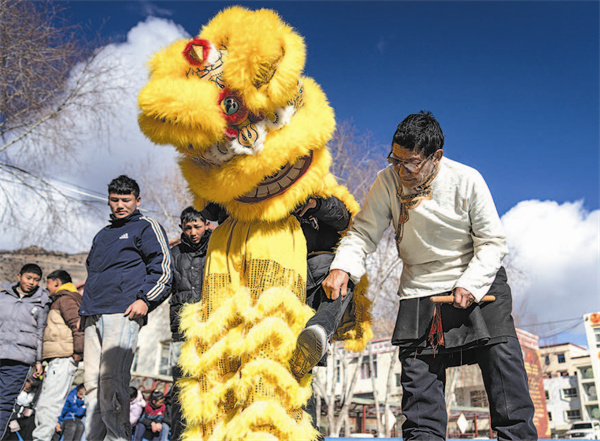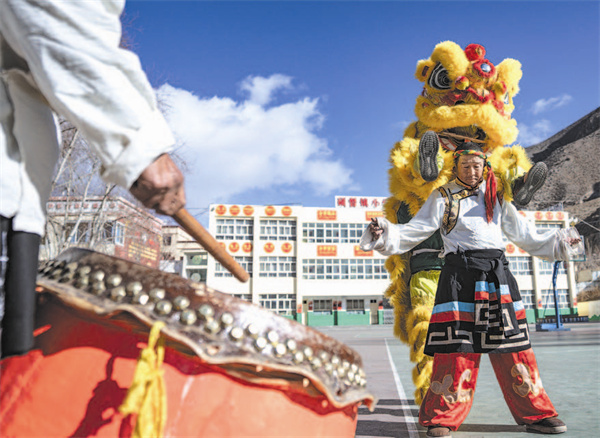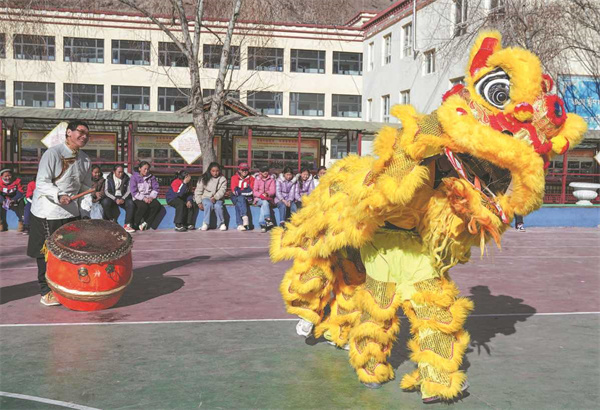In step with tradition
Updated: 2024-01-26 (China Daily)  Print
Print 



Tengpa Anye (right) teaches students to perform a lion dance at a primary school in Lhorong county, Xizang autonomous region, on Jan 19. TENZIN NYIDA/XINHUA
Lhorong county, with an average elevation of about 3,700 meters, was once an important stop along the ancient Tea Horse Road and a significant channel for Tibetan-Han exchanges. Locals in Xobando town injected elements of Tibetan folk dances into the Han lion dance introduced to the town in the early years and created a new performing art — the Xobando lion dance.

Trainees of Tengpa Anye perform a lion dance at a primary school in Lhorong county, Xizang autonomous region, on Jan 19. TENZIN NYIDA/XINHUA
Tengpa Anye, 69, who began to learn the lion dance from his father at 13, is an inheritor of the Xobando lion dance art. In the past, Tengpa had to make lion dance props by himself because he could not afford the ready-made ones. Nowadays, thanks to improved living conditions and support from the local authorities, Tengpa and his students can use professionally prepared props and enjoy opportunities to appear at major performance events.

Tengpa Anye (left) plays the drum as his students perform a lion dance at a primary school in Xobando town of Lhorong county in Qamdo city, Xizang autonomous region, on Jan 19. SUN FEI/XINHUA
No longer an agile performer due to his age, Tengpa is devoted to training younger Xobando lion dancers. He has been teaching lion dance at a primary school in Xobando since 2015.
The Xobando lion dance bears witness to the history of exchanges and integration among diverse ethnic groups in Xizang. "By teaching the lion dance, we are passing on the spirit of ethnic unity," Tengpa said.
XINHUA








